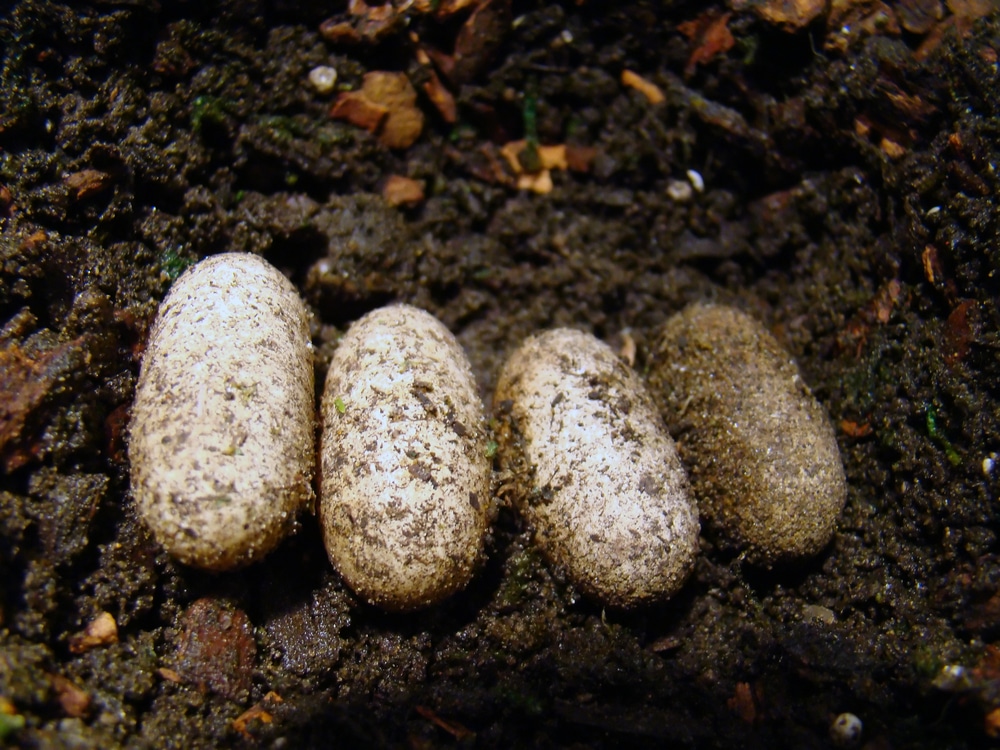When adult Leopard geckos are housed together during the breeding season, breeding is almost inevitable. This article discusses some tips to make the Leopard gecko breeding process as efficient as possible.
Table of Contents
Introduction to Leopard gecko breeding
Leopard geckos are known to be easy breeders. By housing an adult male and female Leopard gecko together, breeding will most likely take place.
Keep the housing enclosure simple
Although Leopard geckos are generally not ferocious during the breeding process, fewer obstacles will be beneficial. Unnecessary enclosure furniture can be obstructive and even cause injuries. A simpler setup will also be easier to maintain, less time-consuming to keep clean and make for better observation.
Also see
Good hygiene practises for Leopard geckos
Bigger enclosures are not always better
Many Leopard gecko breeders use smaller containers during the breeding season. Simple stackable plastic containers (with enough ventilation) measuring between 40 and 60 cm / 15 to 25 ” are generally acceptable for two to four Leopard geckos. Also see the Leopard gecko housing guidelines for more information.
Use only one male
When it is time to breed, male Leopard geckos become very possessive and even aggressive. More than one male during this time will lead to more fighting and less breeding. When space allows, a single male can be paired with two to four females.
Males can be rotated between multiple females
After an evening or two together, a single male Leopard gecko can be rotated with multiple groups of females, but make sure to allow two to three days of rest after about seven days of breeding. This way males can be used more efficiently, but make sure to keep track to prevent inbreeding.
Use breeding boxes
A breeding box, or advanced hide box, with a small opening and a moist substrate, will provide hiding and a place for females to deposit their eggs in. Popular hiding box substrates to use for hiding boxes and as an egg-laying substrate is peat moss and vermiculite. Also see suitable substrates for Leopard gecko for more information.
Prevent egg contamination
Breeding boxes should contain a clean, preferably commercial substrate such as packaged vermiculite, peat moss or a specialised reptile egg-laying substrate. This will prevent eggs from becoming contaminated with bacteria and parasites. Also see suitable substrates for Leopard geckos for more information.
Feed enough food
During breeding, male and female Leopard geckos will need more energy from their food. During this time, mealworms dusted with a commercial calcium/vitamin D combination and a multi-vitamin combination should be available all the time.
Female condition and sizes
Breeding females should preferably be full size and in good condition at the beginning of the breeding season. A good indicator of the condition is the fatness of the tails. The fatter the better.
Less attention is better
It is often beneficial to allow privacy during the breeding season. Opening of the enclosure and hide box should be reserved for daily inspection, cleaning and feeding only.
Get the incubator ready
Before you have it, there will be eggs. By this time you should have done your research on the incubator to use and have it set up to the desired temperature.





